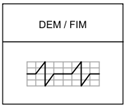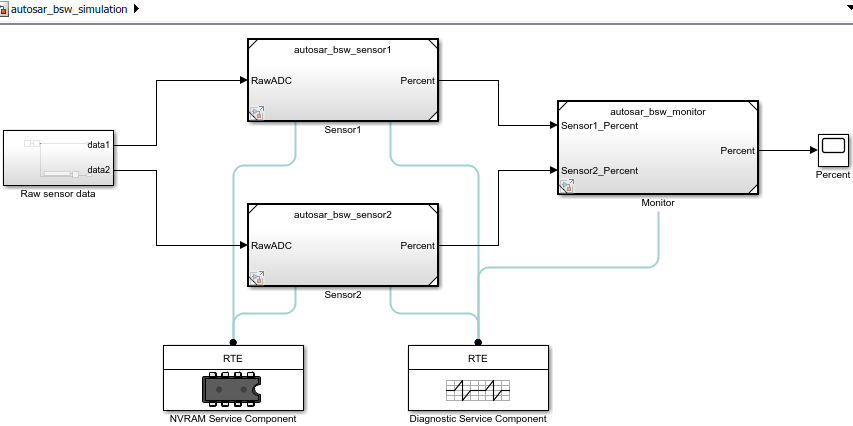Diagnostic Service Component
Configure AUTOSAR Diagnostic Services and Runtime Environment (RTE) for emulation
Libraries:
AUTOSAR Blockset /
Classic Platform /
Basic Software /
Diagnostic Event Manager (Dem)
Description
The Diagnostic Service Component block provides reference implementations of Diagnostic Event Manager (Dem) and Function Inhibition Manager (FiM) services supported by AUTOSAR Basic Software (BSW) caller blocks. When coupled with Dem and FiM caller blocks, the reference implementations enable you to configure and run system-level or composition-level simulations of AUTOSAR Dem and FiM service calls.
The block has prepopulated parameters, including RTE service ID parameters, Dem Counter-Based Debouncing parameters, and FiM inhibition condition parameters. Examine the parameter settings and, if necessary, make modifications based on how you are using the Dem or FiM service operations.
The RTE tab lists component client ports and their mapping to Dem or FiM service IDs for events, operation cycles, or functions with inhibition conditions. Each row in the table represents a call into Dem or FiM services from a Basic Software caller block, for which you can modify an ID value.
The Dem tab Counter-Based Debouncing parameters control the counter-based debounce algorithm provided by the Dem service reference implementations. During multiple simulations, you can adjust event step size and threshold parameters and observe the effects.
Use the counter-based debouncing parameters to determine when a monitored event has passed or failed. For each event ID, the software maintains a counter. When PREFAIL events arrive, the event ID counter increments by the Increment step size (default 1). When PREPASS events arrive, the event ID counter decrements by the Decrement step size (default 1). To determine the event ID counter thresholds at which an event fails or passes, use block parameters Failed threshold (default 2) and Passed threshold (default -1).
In the Dem reference implementations, the step size and threshold parameters apply globally to event IDs, not to individual IDs.
The FIM tab lists function identifiers (FIDs) and their associated inhibition conditions and client ports. The tab provides graphical controls for adding or removing inhibition conditions for a selected FID. For each inhibition condition, select ID and mask values.
Examples
Parameters
Version History
Introduced in R2017b


